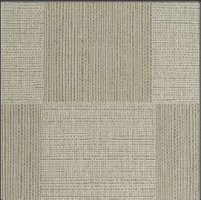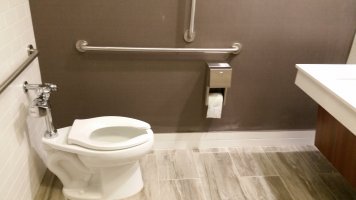Francis Vineyard
REGISTERED
Would you approve textured fabric back vinyl within 2 feet of service sinks, urinals and water closets?
Have not seen the proposed material, but aware we would approve painted CMU walls that have pits, crevices and thick grout borders.

"Ordinary dirt spots can be removed with a mild soap, warm water, and if necessary, a bristle brush to remove dirt from the crevices of deeply textured patterns. Clean from the bottom of the wall upward to protect the baseboard and prevent streaking. Rinse thoroughly with clean water from the top down using a sponge. Deeply embossed wallcoverings need extra attention in the event that suds or loosened dirt lodges in depressed surfaces. Blot wallcovering dry with a soft, lint-free towel. For more difficult stains that are only surface deep, the use of a stronger detergent is recommended. Try an inconspicuous spot first before attempting the entire wall. Always rinse the wall well after applying a detergent.
Vinyl wallcovering has little or no moisture permeability. If the design, construction or maintenance of a building and/or other circumstances allow moisture to accumulate in a wall or wall cavity, wallcovering may act as a vapor barrier, restricting the escape of moisture and increasing the risk of mold growth. Proper design, construction and maintenance practices can prevent moisture accumulation. In all cases, moisture and sources of moisture accumulation must be corrected before installing any wallcovering.
Content:
Fabric backed Vinyl
Fire Rating: Class A
Flame Spread: 15
Smoke Developed: 40"
Have not seen the proposed material, but aware we would approve painted CMU walls that have pits, crevices and thick grout borders.

"Ordinary dirt spots can be removed with a mild soap, warm water, and if necessary, a bristle brush to remove dirt from the crevices of deeply textured patterns. Clean from the bottom of the wall upward to protect the baseboard and prevent streaking. Rinse thoroughly with clean water from the top down using a sponge. Deeply embossed wallcoverings need extra attention in the event that suds or loosened dirt lodges in depressed surfaces. Blot wallcovering dry with a soft, lint-free towel. For more difficult stains that are only surface deep, the use of a stronger detergent is recommended. Try an inconspicuous spot first before attempting the entire wall. Always rinse the wall well after applying a detergent.
Vinyl wallcovering has little or no moisture permeability. If the design, construction or maintenance of a building and/or other circumstances allow moisture to accumulate in a wall or wall cavity, wallcovering may act as a vapor barrier, restricting the escape of moisture and increasing the risk of mold growth. Proper design, construction and maintenance practices can prevent moisture accumulation. In all cases, moisture and sources of moisture accumulation must be corrected before installing any wallcovering.
Content:
Fabric backed Vinyl
Fire Rating: Class A
Flame Spread: 15
Smoke Developed: 40"

